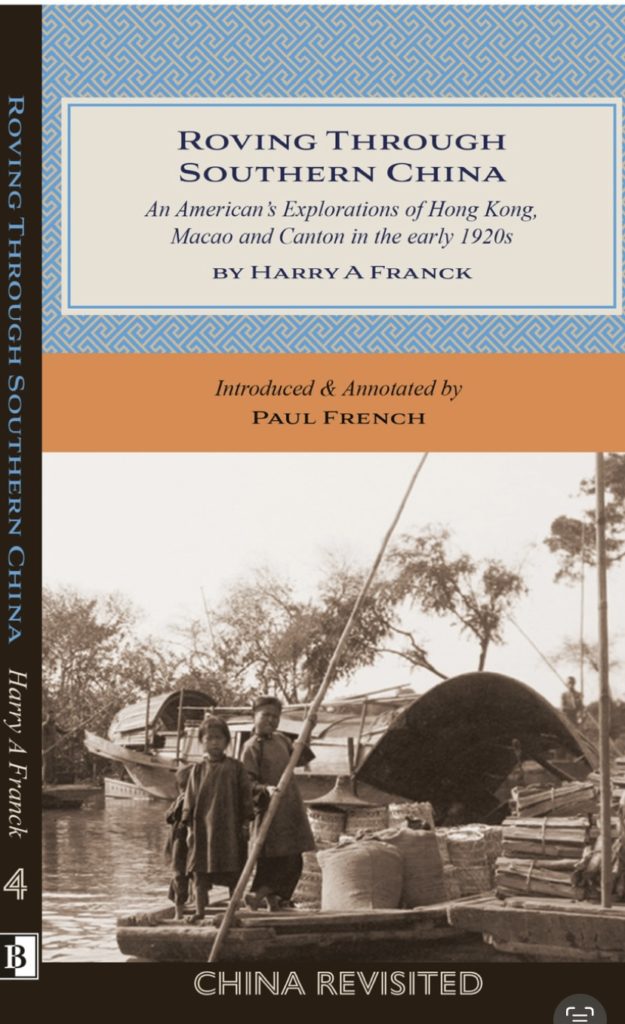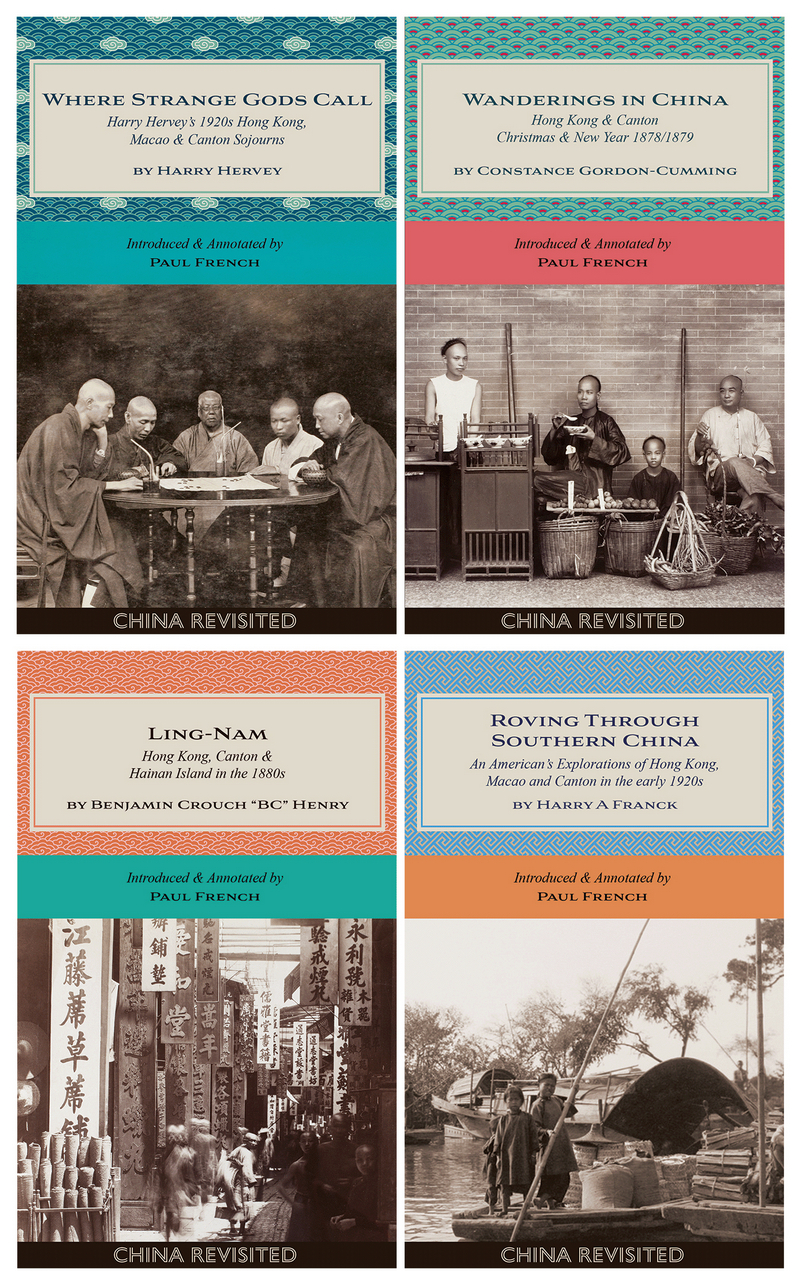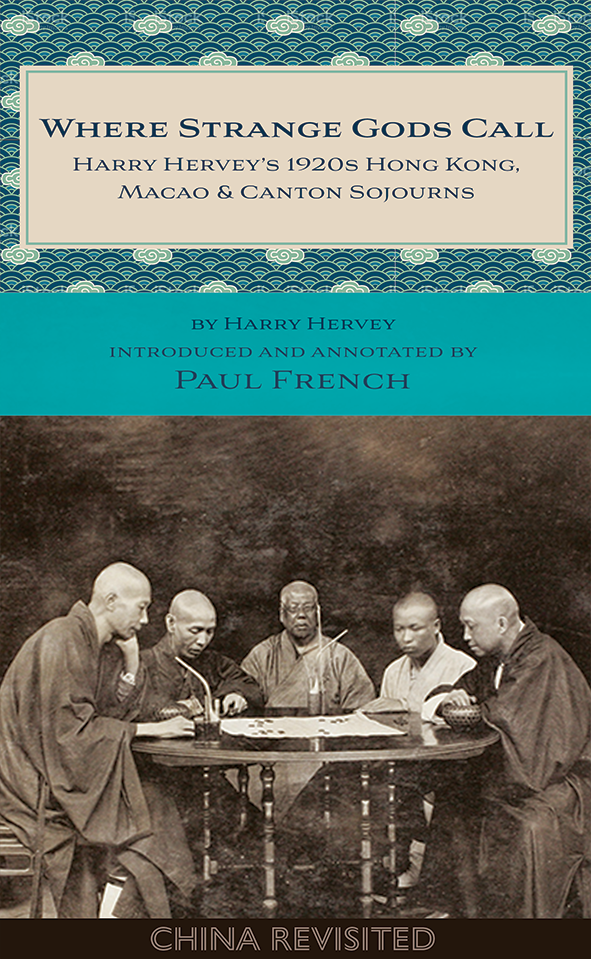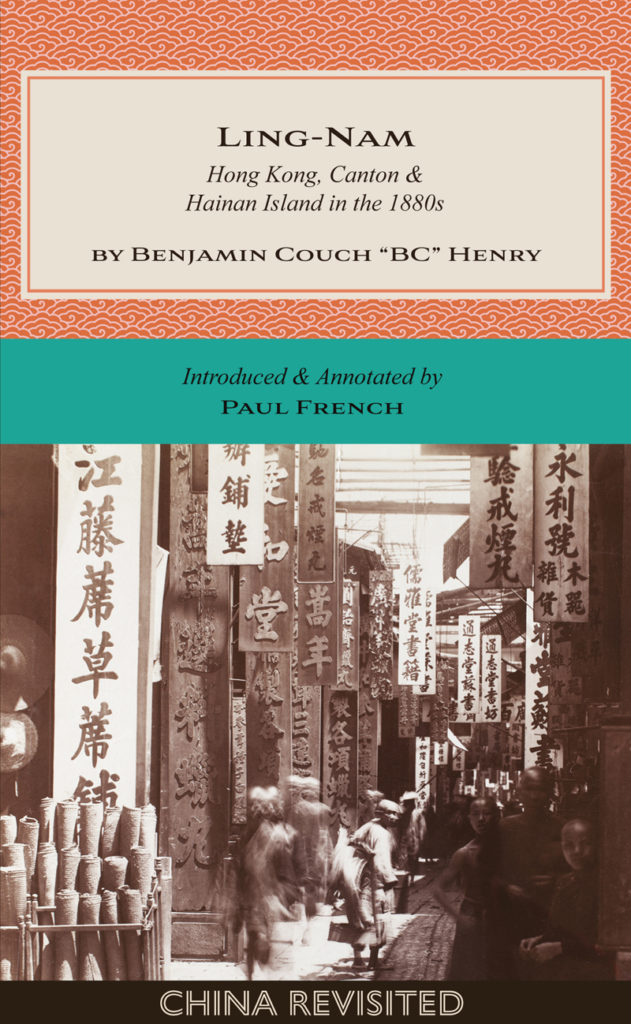Introducing the first four books in the ‘China Revisited’ series – launched 2023 (with the fourth published in January 2024) in association with Hong Kong’s Blacksmith Books: extracted reprints of mid-19th to early 20th century Western impressions of Hong Kong, Macao and China.
The series comprises excerpts from travelogues or memoirs written by missionaries, diplomats, military personnel, journalists, tourists and temporary sojourners. Each book is introduced and annotated by bestselling author Paul French to provide relevant explications of Hong Kong, Macao and China at the time.
Just Published – China Revisited #4 (order here now)
There’s also a 20% discount on a series bundle: Click here
Book #1 – Where Strange Gods Call: Harry Hervey’s 1920s Hong Kong, Macao and Canton Sojourns
By Harry Hervey, introduced and annotated by Paul French
As a young man in the southern United States in the early years of the twentieth century Harry Hervey dreamt of travelling to Asia. He also dreamt of writing novels, movie scripts and travel books. He would do all these things. Eventually, in 1923, Hervey managed to find a way to get to the Far East working on a cruise liner. He was to spend time sojourning in Hong Kong, Macao and Guangzhou. His impressions of his travels through southern China, contained in his 1924 travelogue Where Strange Gods Call, is both lyrical and detailed, as well as atmospheric and informative. Walking from Central to Kennedy Town; the basement “dives” of Belcher’s Street to the private dining rooms of Queen’s Road; Macao’s Praia Grande to its infamous fan-tan houses, Hervey is a fascinating flâneur and guide. So too in Guangzhou, a city in upheaval, where Hervey encounters those fleeing warlord violence in the north and is granted an audience with Dr Sun Yat-sen.
Hervey’s impressions of China would stay with him for the rest of his life, not least in his treatment for the 1932 movie Shanghai Express. Sadly, in the intervening century since the first publication of Where Strange Gods Call in 1924, Hervey’s name and work have been largely forgotten. Yet his early travel writing was to influence his later bestselling novels, popular short stories and Hollywood screenplays which, in turn, influenced American perceptions of Hong Kong, Macao and China.
This publication of Hervey’s impressions of southern China also includes the sketches of his good friend the Savannah artist Christopher Murphy Jr., which were included in the first edition of Where Strange Gods Call and bring Hervey’s descriptions further to life.
“Approaching Canton we were gliding past ugly, ramshackle dwellings and go-downs; grass-thatched house-boats, sampans, junks, and lighters, and millions of roofs that were flung in uneven terraces against the sky.”
Book #2 – Wanderings in China: Hong Kong and Canton, Christmas and New Year, 1878/1879
By Constance Gordon-Cumming, introduced and annotated by Paul French
Inveterate Victorian traveller and prolific artist Constance Gordon-Cumming, born in Glasgow in 1837, roamed far and wide from the Scottish Highlands to the American West; the islands of Hawaii to southern China. Even among her many adventures, her 1878/1879 trip to Hong Kong was momentous. Gordon-Cumming arrived just before Christmas 1878 to inadvertently witness the terrible “Great Fire” of Hong Kong that swept devastatingly through the Central and Mid-Levels districts.
She then moved on to explorations of the streets, temples and Chinese New Year festivities in Canton (Guangzhou). Her detailed descriptions of the teeming streets of the city’s commercial districts and New Year temple fairs contrast with her temporary residence in the relative calm of the foreign enclave on Shamian Island. Venturing out of the city on expeditions, Gordon-Cumming gives us perhaps one of the most complete descriptions of the now long-gone market gardens of Fa-tee with the famed nurseries that cultivated a bewildering variety of flowers and ornamental trees.
Finally Gordon-Cumming returns to Hong Kong to observe the annual “Derby Day” races at Happy Valley in February 1879, a major event on Hong Kong’s Victorian-era social calendar. Gordon-Cumming is at one and the same time that rare travel writer who, while plunging into the throngs and crowds, manages to observe the minutiae of life around her.
“The flames rapidly gained the mastery, suddenly bursting from fresh houses here and there, where least suspected, and spreading from street to street. That night we stood watching this appallingly magnificent scene – the flames rising and falling, leaping and dancing, now bursting from some fresh house, shooting up in tongues of fire, now rolling in dense volumes of black smoke.”
Book #3 – LING-NAM: Hong Kong, Canton and Hainan Island in the 1880s
By Benjamin Couch ‘BC’ Henry, introduced and annotated by Paul French
Benjamin Couch “BC” Henry was a missionary in Hong Kong and southern China in the second half of the 19th century. He arrived in 1873 and remained until 1894. Yet he was much more too – a keen observer, a skilled naturalist and an intrepid explorer. His fascination with the flora and fauna of Hong Kong and southern China are obvious throughout the pages of LING-NAM.
The bulk of his career in China was spent in what was then commonly known as “Ling-nam”, the Pearl River Delta and environs of Guangzhou. These excerpts of Henry’s travelogue LING-NAM, published in 1886, contain one of the most detailed walking tours of Guangzhou that has survived. Similarly so his travels through the silk, tea and market garden regions adjoining the metropolis. Abd finally, we have Henry’s ground-breaking account of his expeditions around Hainan Island in 1882, then the most extensive undertaken to date by a foreigner. He was also a keen anthropologist interested in the island’s various ethnic groups, such as the Lois, as well as the various languages and dialects of Hainan. Henry’s portrait of southern China was built up over 20 years work and exploration in the region and provides one of the most in-depth looks at southern Chinese life from the growth of Hong Kong, to the bustling streets of Guangzhou, to Hainan’s “Island of Palms”.
“Drifting slowly by a large collection of flower-boats, gay with lamps and mirrors, and richly furnished with black-wood sofas and embroidered curtains… Dire confusion is often created among the slipper-boats, whose anchorage adjoins, by the surging of the steamer against their outer lines, causing them to jump, and sputter, and dart about like a swarm of ants, shell-like craft, whilst they vociferously hurl maledictions at the great steamer.”
Book #4 – Rovings in Southern China (1925)
By Harry A Franck, introduced and annotated by Paul French
In the 1920s the American travel writer Harry A Franck was known to readers as the “Prince of Vagabonds”. His wanderings were family affairs and he arrived in southern China in 1923 with his wife, their two young children and his mother. Franck always claimed that his travel plans were random, subject to chance encounters and whatever caught his eye.
He arrives in a Hong Kong which is building modern department stores and large houses while labourers sleep on straw mats beside the harbour. In Macao he visits temples, ancient forts and, of course, casinos. And then to Canton (Guangzhou), a city in flux where new buildings are transforming the waterfront, the ancient city walls are being demolished, and the traditional rookeries of small lanes are being replaced by wide asphalt roads as the city rapidly modernises. Franck also provides us with a highly detailed description of Shamian Island a year after the tumultuous strikes and boycotts that meant naval gunboats and barbed wire still protected the small foreign enclave.





